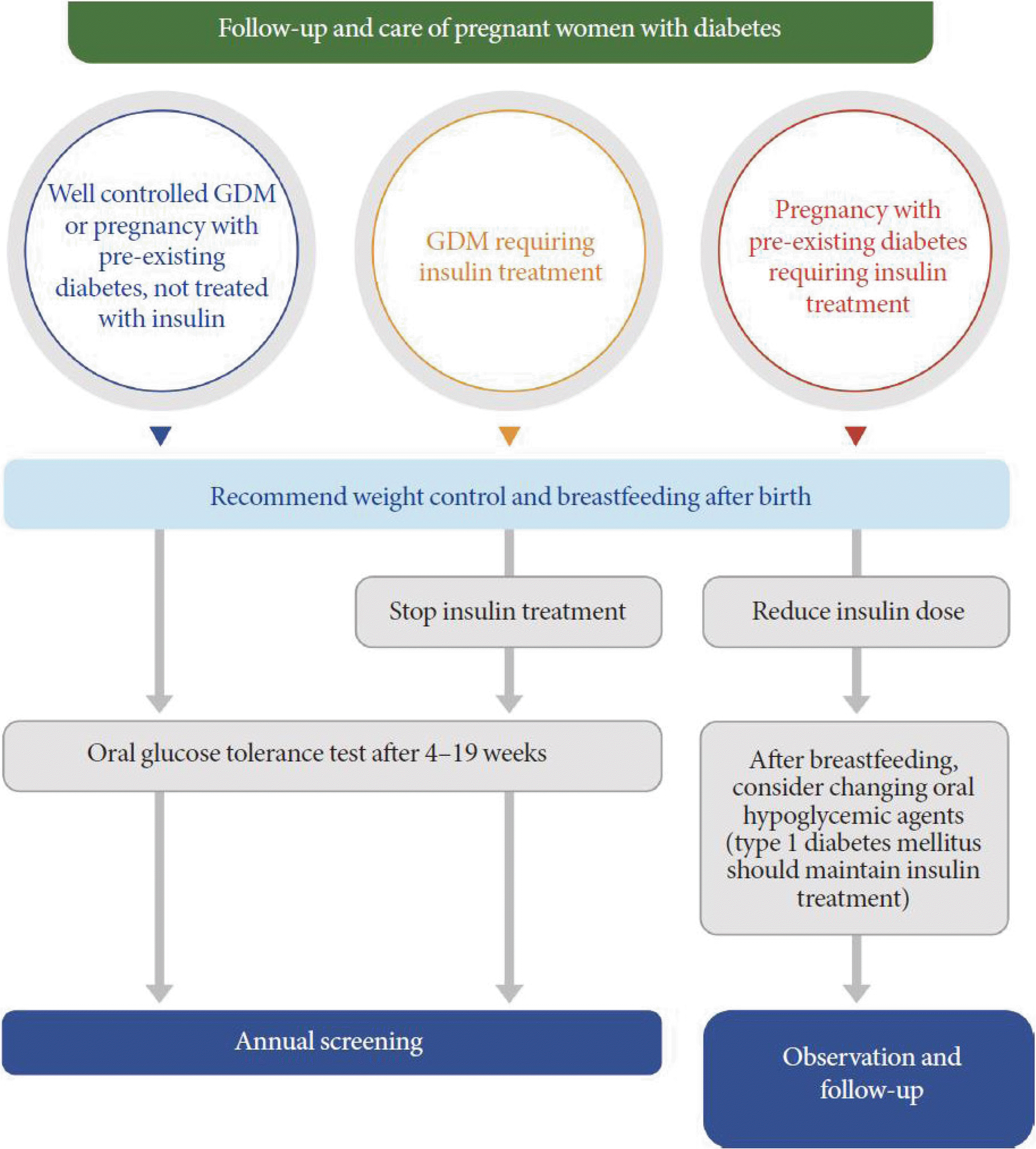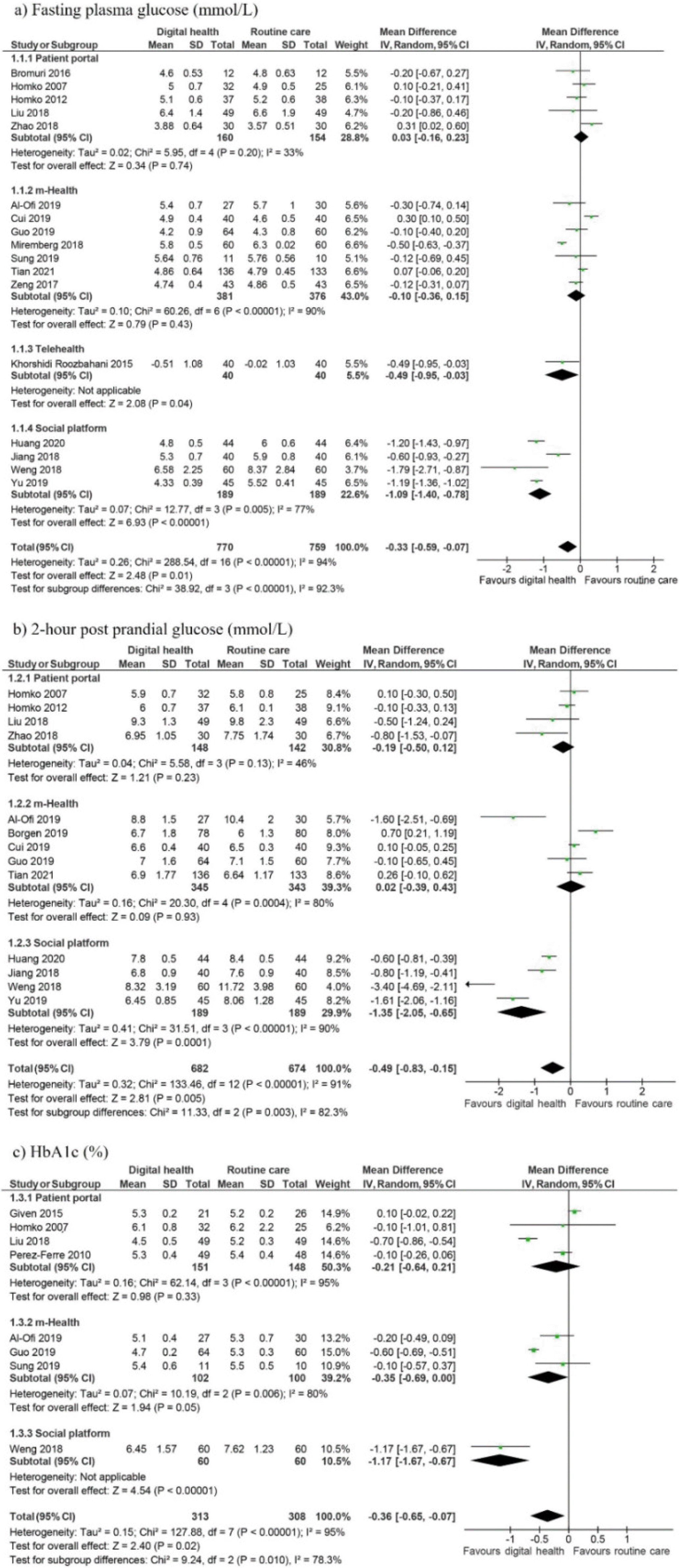1.Gregg EW., Cheng YJ., Srinivasan M., Lin J., Geiss LS., Al-bright AL, et al. Trends in cause-specific mortality among adults with and without diagnosed diabetes in the USA: an epidemiological analysis of linked national survey and vital statistics data. Lancet. 2018. 391:2430–40.

2.American Diabetes Association. Standards of medical care in diabetes-2010. Diabetes Care. 2010. 33(Suppl 1):S11–61.
3.Bashir M., Ibrahim I., Beer S., Shahbic H., Eltaher F., Al-Mu-tawaa K, et al. Integrated care of diabetes during pregnancy: a Qatari nationwide cohort. EClinicalMedicine. 2024. 72:102605.

4.Hivert MF., Backman H., Benhalima K., Catalano P., Desoye G., Immanuel J, et al. Pathophysiology from preconception, during pregnancy, and beyond. Lancet. 2024. 404:158–74.

5.Chivese T., Hoegfeldt CA., Werfalli M., Yuen L., Sun H., Karuranga S, et al. IDF Diabetes Atlas: the prevalence of pre-existing diabetes in pregnancy - a systematic review and meta-analysis of studies published during 2010-2020. Diabetes Res Clin Pract. 2022. 183:109049.

6.Zahmatkeshan M., Zakerabasali S., Farjam M., Gholampour Y., Seraji M., Yazdani A. The use of mobile health interventions for gestational diabetes mellitus: a descriptive literature review. J Med Life. 2021. 14:131–41.

7.American Diabetes Association. 2. Classification and diagnosis of diabetes: standards of medical care in diabetes— 2021. Diabetes Care. 2021. 44(Suppl 1):S15–33.
8.Crossen SS., Bruggeman BS., Haller MJ., Raymond JK. Challenges and opportunities in using telehealth for diabetes care. Diabetes Spectr. 2022. 35:33–42.

9.Lee JS., Lee YA., Shin CH., Suh DI., Lee YJ., Yon DK. Long-term health outcomes of early menarche in women: an umbrella review. QJM. 2022. 115:837–47.

10.Sweeting A., Hannah W., Backman H., Catalano P., Feghali M., Herman WH, et al. Epidemiology and management of gestational diabetes. Lancet. 2024. 404:175–92.

11.Moon JS., Kang S., Choi JH., Lee KA., Moon JH., Chon S, et al. 2023 Clinical practice guidelines for diabetes management in Korea: full version recommendation of the Korean Diabetes Association. Diabetes Metab J. 2024. 48:546–708.

12.Kuan PX., Chan WK., Fern Ying DK., Rahman MAA., Peariasamy KM., Lai NM, et al. Efficacy of telemedicine for the management of cardiovascular disease: a systematic review and meta-analysis. Lancet Digit Health. 2022. 4:e676–91.

13.Yew TW., Chi C., Chan SY., van Dam RM., Whitton C., Lim CS, et al. A randomized controlled trial to evaluate the effects of a smartphone application-based lifestyle coaching program on gestational weight gain, glycemic control, and maternal and neonatal outcomes in women with gestational diabetes mellitus: the SMART-GDM study. Diabetes Care. 2021. 44:456–63.

14.Patel SY., McCoy RG., Barnett ML., Shah ND., Mehrotra A. Diabetes care and glycemic control during the COVID-19 pandemic in the United States. JAMA Intern Med. 2021. 181:1412–4.

15.Carallo C., Scavelli FB., Cipolla M., Merante V., Medaglia V., Irace C., Progetto Diabete Calabria, et al. Management of type 2 diabetes mellitus through telemedicine. PLoS One. 2015. 10:e0126858.

16.Mackillop L., Hirst JE., Bartlett KJ., Birks JS., Clifton L., Farmer AJ, et al. Comparing the efficacy of a mobile phone-based blood glucose management system with standard clinic care in women with gestational diabetes: randomized controlled trial. JMIR Mhealth Uhealth. 2018. 6:e71.

17.Shibuta T., Waki K., Tomizawa N., Igarashi A., Yamamoto-Mitani N., Yamaguchi S, et al. Willingness of patients with diabetes to use an ICT-based self-management tool: a cross-sectional study. BMJ Open Diabetes Res Care. 2017. 5:e000322.

18.Lobig F., Subramanian D., Blankenburg M., Sharma A., Variyar A., Butler O. To pay or not to pay for artificial intelligence applications in radiology. NPJ Digit Med. 2023. 6:117.

19.Park S., Lee H., Cho W., Woo HG., Lim H., Kim S, et al. Efficacy of information and communication technology interventions for the management of diabetes mellitus: an umbrella review and evidence map. Obes Rev. 2024. 25:e13714.

20.Xie W., Dai P., Qin Y., Wu M., Yang B., Yu X. Effectiveness of telemedicine for pregnant women with gestational diabetes mellitus: an updated meta-analysis of 32 randomized controlled trials with trial sequential analysis. BMC Pregnancy Childbirth. 2020. 20:198.

21.Leblalta B., Kebaili H., Sim R., Lee SWH. Digital health interventions for gestational diabetes mellitus: a systematic review and meta-analysis of randomised controlled trials. PLOS Digit Health. 2022. 1:e0000015.

22.Bahendeka S. Implementing digital systems in diabetes care in low-income and middle-income countries: successes and challenges. Lancet Diabetes Endocrinol. 2023. 11:387–8.

23.Georgsson M., Staggers N. Quantifying usability: an evaluation of a diabetes mHealth system on effectiveness, efficiency, and satisfaction metrics with associated user characteristics. J Am Med Inform Assoc. 2016. 23:5–11.

24.Khera R., Butte AJ., Berkwits M., Hswen Y., Flanagin A., Park H, et al. AI in medicine-JAMA's focus on clinical outcomes, patient-centered care, quality, and equity. JAMA. 2023. 330:818–20.







 PDF
PDF Citation
Citation Print
Print


 XML Download
XML Download